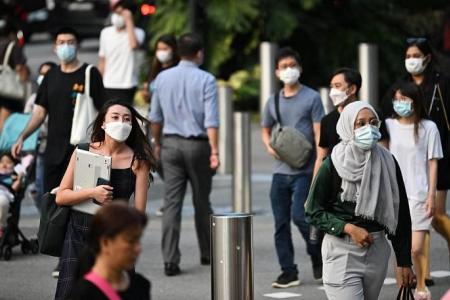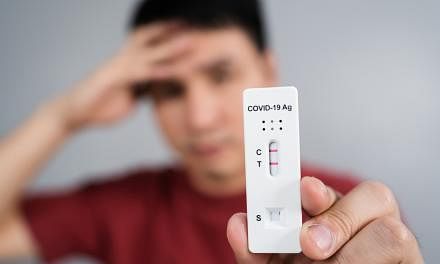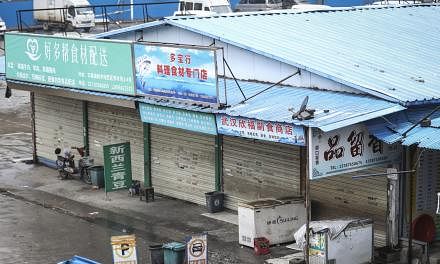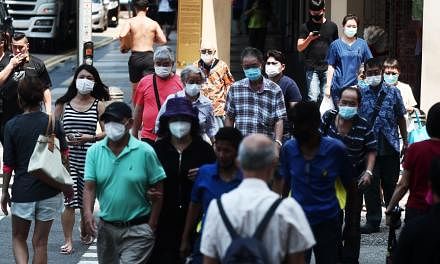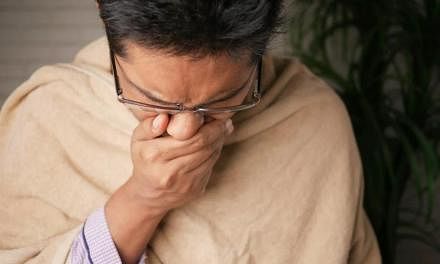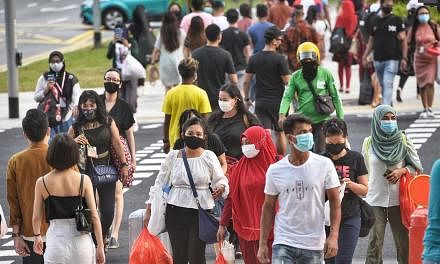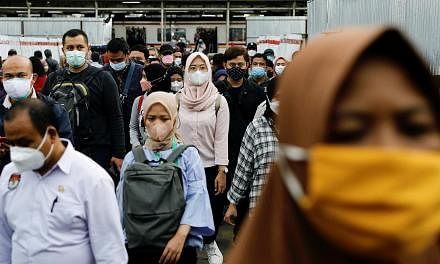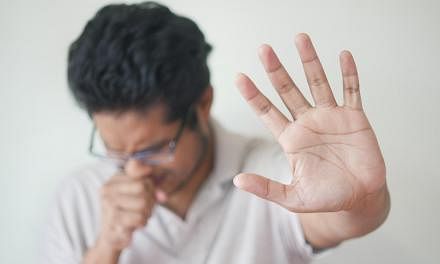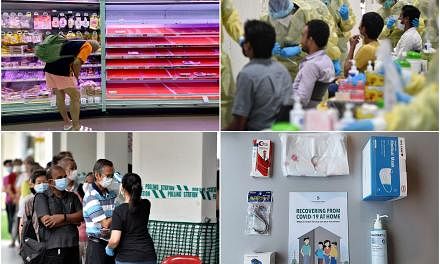Is the current Covid-19 wave in Singapore over? 15 things you need to know
Health Minister Ong Ye Kung gave a round-up of Singapore's latest Covid-19 situation in Parliament on Monday (Aug 1).
Here are 15 things to know from his speech.
1. How is the Covid-19 situation now?
Singapore is still in the middle of an infection wave driven by the Omicron variant BA.5. Over the last 10 days, infection numbers have been falling. The wave should subside further this week.
2. How many people in Singapore have caught Covid-19?
Six in 10 people in Singapore are likely to have been infected with Covid-19.
Singapore has about 1.7 million reported cases and the number translates to about 30 per cent of the population. The Government monitors blood samples taken from polyclinic patients and other healthy volunteers for signs of previous infection. From these samples, it is estimated that about 60 per cent of local residents are likely to have been infected with Covid-19.
3. Does that mean that there is herd immunity now?
There is no herd immunity. Scientists around the world do not think herd immunity is achievable because the virus will continue to mutate, get around the protection offered by vaccines, and infect people.
What is achievable is "population protection against severe illness" through vaccinations. This is what enables the healthcare system to weather through an infection wave because the incidence of severe illness will be kept low.
In the current wave so far, about 1.9 per cent of infected persons are in hospitals, compared with 2.4 per cent in the previous Omicron wave at the start of this year. The actual figure is lower in the current wave because not all cases are reported.
4. Are we out of the woods for now?
The protection of vulnerable groups, especially the seniors, remains a concern for the Government.
Three mRNA shots are needed for good vaccine protection against severe illness from Omicron infections. However, there remains 40,000 eligible seniors aged 60 and above who have not received their booster shots.
Another 40,000 seniors have not completed two doses yet. All of them are very vulnerable to severe illness if infected. The Government will continue to try to reach out to them through the Mobile Vaccination Teams.
5. When will the protection offered by my vaccination wane?
Empirical data shows that after 10 months, the protective effect of three doses of mRNA vaccines remains very strong in preventing severe illness. This is why those who are 80 years old and above should get a second booster or fourth shot to better protect them against severe disease. While the protection for this age group is not waning, it is generally lower than younger age groups.
6. Should those aged between 60 and 79 get a second booster or fourth shot?
Experts here are studying the benefits of a fourth shot for the 60- to 79-year-olds in further reducing the likelihood of severe illness. The Government will announce their recommendations once they are ready.
7. A fourth shot is available for those aged 50 to 59. Should they get it?
Younger individuals below 60 years old have the protection of both the third shot and age, and currently do not require a second booster if they are healthy.
8. Apart from those aged 80 and above, who would benefit from a fourth shot or second booster?
For those 50 to 79, although the protection level offered by three vaccine shots continues to be strong, this is also the age when chronic illnesses start to set in. So, they will be offered the second booster if they want to take it because they are travelling, or worried about their health because of underlying illness.
The Ministry of Health (MOH) will continue to study the emerging data on vaccines, including the benefits of newer vaccine formulations, weighed against the risk of new variants, and update its recommendations when necessary.
9. Will we need to get the Covid-19 jab every year?
As the protection offered by vaccines and prior infection wanes, the virus will circulate again and cases will rise. The most important precaution to take is to keep vaccinations up to date.
"At some point, just like flu vaccinations, we will have to stop counting the number of boosters or shots we take. Instead, we must ensure that we get a jab at a suitable interval - maybe nine months or a year," Mr Ong said.
This is something MOH will try to determine in the coming months.
10. Is the Government tracking reinfections?
MOH has been watching the reinfection numbers very closely because they will inform the ministry of the likely timing of future waves. It has observed that the chances of reinfection for those who were infected over the last three months are very rare.
Reinfections are taking place, albeit not so frequently, in Singapore, and are likely to increase as protection offered by prior infections wanes.
MOH will start to include reinfection numbers in its daily reported case counts to better reflect the pandemic situation.
11. How is the hospital situation like?
Healthcare workers have been very busy. Polyclinics and general practitioner clinics have been handling higher patient volumes.
The key is to ensure that hospitals are not overwhelmed and that those who need urgent care can be attended to promptly. Fortunately, this is generally the case.
12. What did the Government do to avoid overwhelming the hospitals?
The Government planned to set aside up to about 1,000 hospital beds for Covid-19 patients, but so far, there has been no need to activate all of the beds.
The workload of hospitals is being eased by transferring lower-risk patients to Covid-19 treatment facilities, and discharging patients staying long term to community care facilities like nursing homes.
Finally, hospitals have cut down on their "business-as-usual" workload by about 5 per cent, comprising mostly elective surgery. This number is far less than the 15 per cent cut that was implemented in the previous Omicron wave at the start of the year.
13. Has hospital-acquired Covid-19 infections contributed to a bed crunch?
No. Absenteeism in hospitals due to Covid-19 has been lower this time, at around 2 per cent. There was some transmission within hospitals, but the overall hospital-acquired Covid-19 infection rate has been low, and very likely lower than community-acquired infections because of good infection control measures in hospitals.
Bed crunches are mainly caused by high case numbers, and how they translate into severe illness that needs hospitalisation. There are only two ways to minimise this - social restrictions and through good coverage of vaccination in the population. Singapore needs to rely on vaccinations because no one wants to live with social restrictions as far as possible.
14. Are oral antiviral drugs being used here?
Yes. MOH has previously shared that all polyclinics and more than 130 participating public health preparedness clinics can prescribe oral antivirals to eligible patients in the community. To date, more than 3,200 patients have been prescribed such therapeutics. This is a small percentage of all infections because the vast majority of infected cases are of low risk.
15. What should we note about Covid-19 as Singapore lives with the disease?
Singapore is coping better with the Covid-19 wave, but it needs to be alert to the threat of a new variant that is more infectious, leads to more severe illnesses, or evades the protection of current vaccines. The hope is that it will not happen, but many countries in the northern hemisphere are wary of what may emerge in the coming winter. Social restrictions may be needed if such a variant surfaces here.
Get The New Paper on your phone with the free TNP app. Download from the Apple App Store or Google Play Store now

